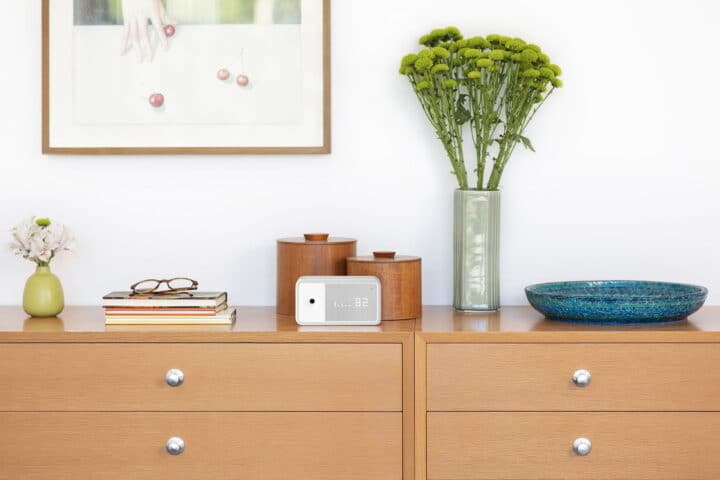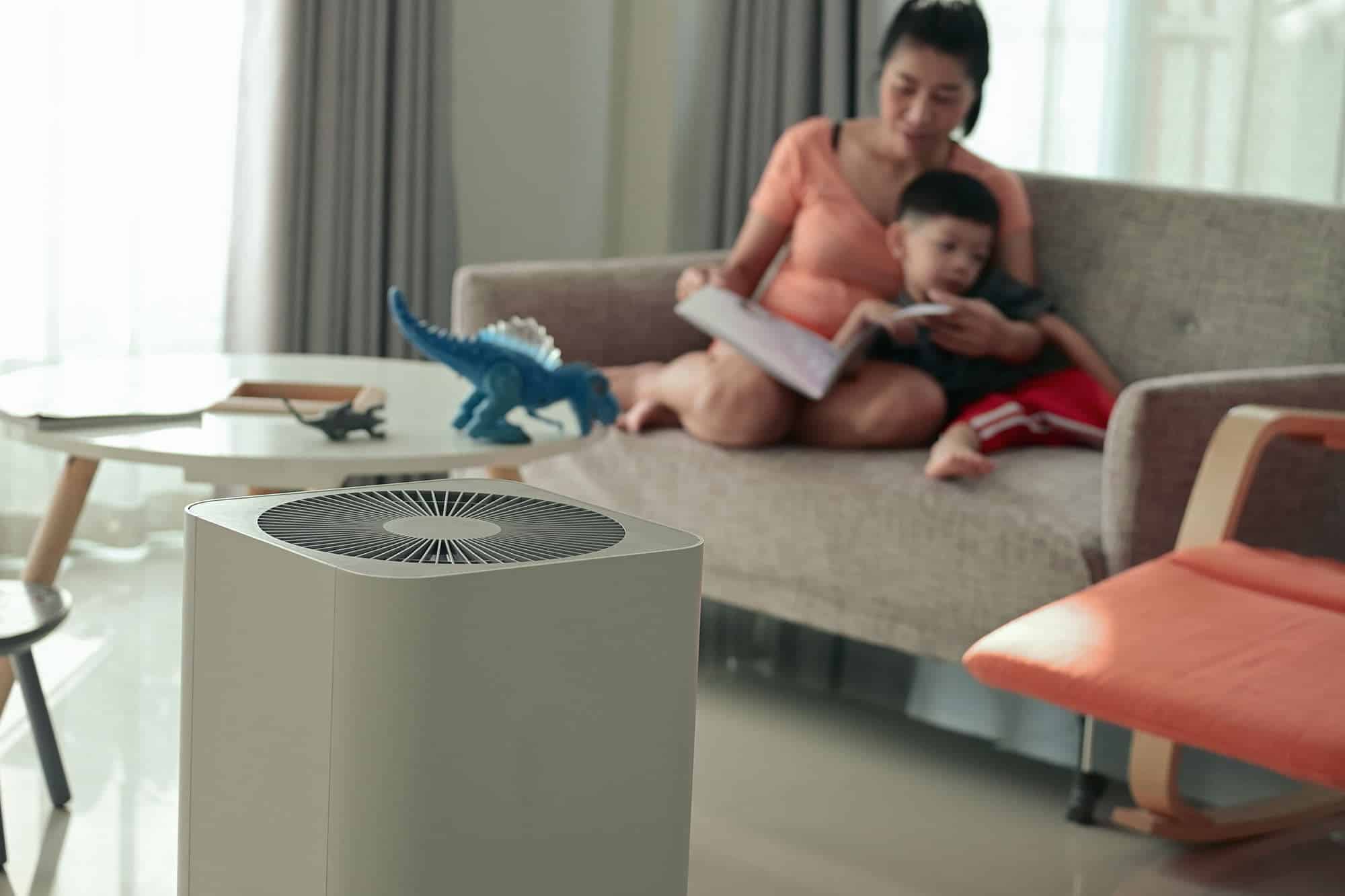Have you ever wondered if the air quality in your home is affecting your health? Poor indoor air quality can lead to various health risks, including an increased risk of lung disease and cancer. In this article, we will explore the causes of indoor air pollution and provide practical tips on improving indoor air quality in your home. By implementing these strategies, you can create a healthier living environment for you and your loved ones.
Infographic
We’ve distilled the information below down to an easy-to-understand infographic for our subscribers. For performance reasons, a lower-quality image is shown on this page. To save the full-size image to your computer, click the “download” button below the infographic.

Sources of poor indoor air quality
Common indoor air pollutants include volatile organic compounds (VOCs), radon, carbon monoxide, PM 2.5, formaldehyde (a type of VOC), ozone, polycyclic aromatic hydrocarbons (PAHs), and nitrogen dioxide. To learn more about these common indoor air pollutants in detail, check out this article on indoor air quality monitors.
Smoking
Second-hand smoke is a contributor to poor indoor air quality. Smoking releases nitrogen dioxide, formaldehyde, carbon monoxide, PAHs, and other toxic chemicals into the air. The EPA says that smoking is the number one cause of indoor air pollution globally and poses the highest risk to sensitive groups.
Mold
Mold can start even while the building is under construction, leading to inevitable growth. However, high humidity levels cause unwanted mold to grow. Mold spores become airborne and inhaled, leading to potential health consequences. If you notice mold or mildew growing anywhere in your house, deal with it immediately to prevent spread to other parts of the home.
Cleaning products and paint
Cleaning products contain chemicals to improve their smell, but the cleaning agents themselves can be hazardous. Cleaning products produce a host of various pollutants, including VOCs, formaldehyde, and PM 2.5, and cause ground-level ozone formation.
Incense, candles, and biomass burning
Burning incense and candles releases formaldehyde, acetaldehyde, benzene, and PM into the atmosphere. While candles and incense look and smell nice, the number of carcinogens released when burning them is not worth the risk. Biomass burning includes burning wood in fireplaces and charring food while cooking. Burning biomass releases carbon dioxide, PM, and formaldehyde into the atmosphere.

Poor ventilation
Poor ventilation prevents indoor air pollutants from dispersing. Inadequate filtration cause unnecessary PM to blow from ventilation ducts and reduce the number of VOCs removed.
Gas stoves
Gas stoves present in older homes may be convenient, but they pose a greater health risk due to air pollution production when compared to their electric alternatives. Gas stoves release PM, nitrogen dioxide, PAHs, and carbon monoxide into the air.
Radon leaks
Radon is a naturally occurring gas that forms from the decomposition of other radioactive metals underground. Sometimes radon can leak into the home through cracks in the base of a building or design flaws.
Asbestos
Asbestos is a common insulation material used in walls in homes. Unfortunately, inhaling asbestos elevates the chances of developing lung disease.
What is considered poor indoor air quality?
The AQI, or air quality index, measures air quality based on tropospheric ozone concentrations, particle pollution, carbon monoxide, sulfur dioxide, and nitrogen dioxide. An AQI of less than 50 is considered healthy. An AQI of 50-100 is moderate for some sensitive groups, while a score of 100-150 can cause health effects for sensitive groups. Anything above 150 is considered unhealthy for the general public, with numbers greater than 200 deemed hazardous. As for other levels of common air pollutants, the EPA’s cutoff for radon is four picocuries per liter. PM 2.5 falls within the unhealthy range when concentrations rise above 35.4 μg/m3. Carbon monoxide levels above 50 parts per million are unsafe.

How can I monitor indoor air quality?
Investing in an air quality monitoring device paired with a carbon monoxide detector is the easiest way to monitor indoor air quality. Check out this article for more information about specific indoor air quality monitoring devices.
While purchasing a device is the most accurate indicator of poor indoor air quality, there are some common indicators of indoor air quality that you can look for. These include condensation on the inside of windows, indicating poor air circulation and high humidity, leading to mold growth. Dust buildup, headaches, and allergy aggravation are also indicators of poor indoor air quality.
How can I improve indoor air quality?
Turn on your fans
Using your fan in your bathroom can help reduce moisture accumulation and prevent mold growth. Turning on your ventilation while cooking can also help reduce the VOCs and PM concentrations. Your fan will help improve indoor air quality while cleaning or using any alcohol-based substance to avoid harmful VOCs.
Add a few houseplants
Adding a few houseplants to your home can significantly improve indoor air quality. Plants naturally filter and purify the air by absorbing harmful pollutants and releasing oxygen. Called photosynthesis, plants absorb carbon dioxide and other toxins, such as formaldehyde and benzene, commonly found in household products and materials. Additionally, plants release moisture into the air, which can help to combat dryness and reduce airborne allergens.
Open your windows
Allowing frequent home ventilation by running fans and opening windows effectively minimizes indoor humidity and disperses gases or particulate matter, improving indoor air quality. If you live in a humid climate, opening windows may not be the most effective way of reducing indoor humidity. In this case, you may want to consider a dehumidifier.
Use an air purification system
Indoor air purifiers are relatively small electric devices that improve indoor air quality. When selecting an air purification system, ensure that the device’s range is proportional to the room you plan to use it in. Air purification systems can be beneficial if you reside in a region with frequent fires, such as California. If outdoor air quality prevents you from opening windows, then an air purification system is something you should consider.
Change your furnace filter frequently
Furnace air filters collect dust over time. A clogged air filter prevents proper circulation. Therefore, replacing your air furnace filters every one to six months minimizes the number of dust particles blown into the air.
Dust, clean, and vacuum often
Dusting and vacuuming frequently can reduce the amount of PM and improve indoor air quality. Washing your bedding and cleaning your furniture weekly will help eliminate PM that could be allergy-inducing. Selecting odor-free cleaning products is a simple way to reduce toxic VOC exposure.
Install a heat recovery ventilator
Heat recovery ventilators provide improved circulation for newer, more airtight homes. While tight construction improves energy efficiency and prevents weather leaks, its downfall is reduced air circulation and thus worse air quality. Heat recovery ventilators are effective in reducing humidity and preventing mold. They circulate fresh air with minimal energy loss. Heat recovery ventilators are the most expensive option on this list. They may not be the best option for your home, so research or consult a professional before purchasing one.
Test for high radon levels
You can assess the radon levels in your home by purchasing a radon test kit. When selecting a radon testing kit, be sure to buy a test kit with a 90-day minimum; the short-term radon test kits are far less accurate.
Avoid burning candles, using wooden stoves, and smoking indoors
It may look and smell nice, but burning candles, smoking, and burning any other unnecessary substance raises concentrations of PM, formaldehyde, PAHs, and other toxins in the air. It is essential to avoid smoking indoors or burning candles indoors around children and other vulnerable groups, as this can have long-term consequences on their health.
Wrapping Up
You do not need to spend a fortune to improve indoor air quality. Selecting inexpensive indoor air quality monitors to assess the air quality can help you determine the problematic air pollutants in your home and help you choose the best course of action. Small changes such as avoiding candles, turning on fans, and opening windows can help reduce indoor air pollutants before purchasing an air quality monitor.


